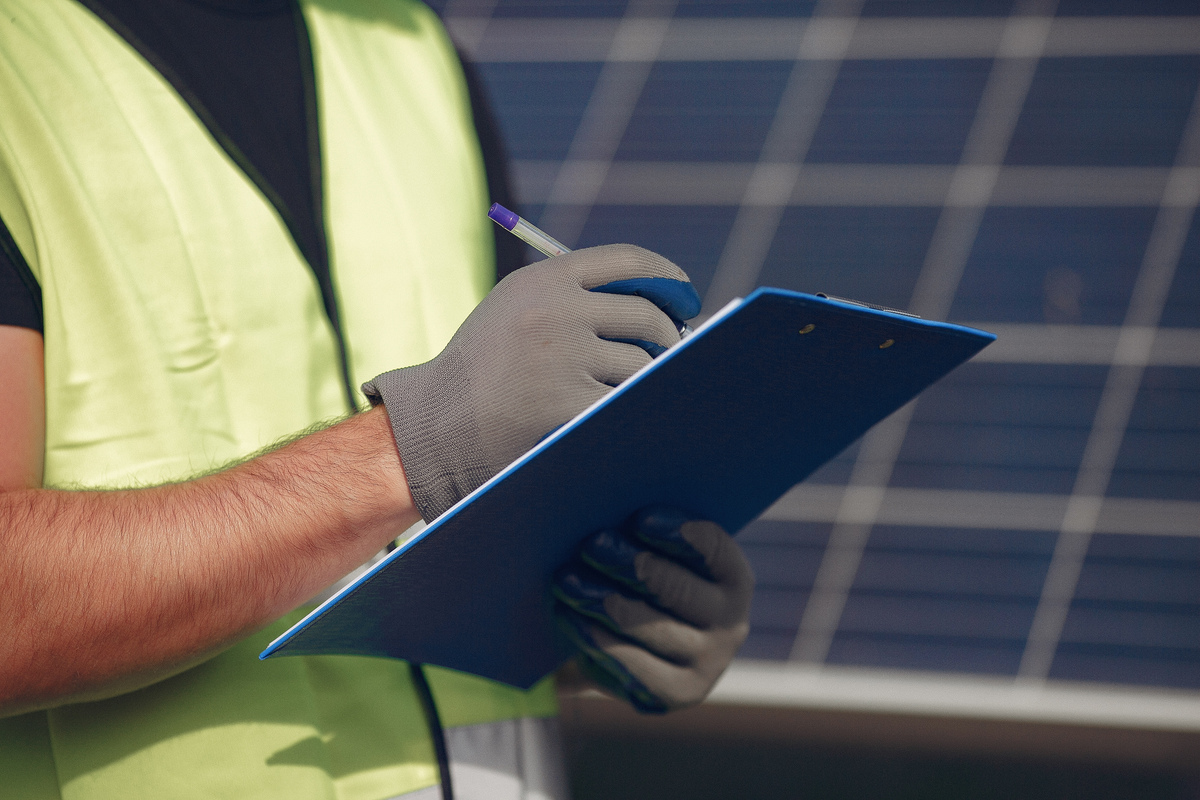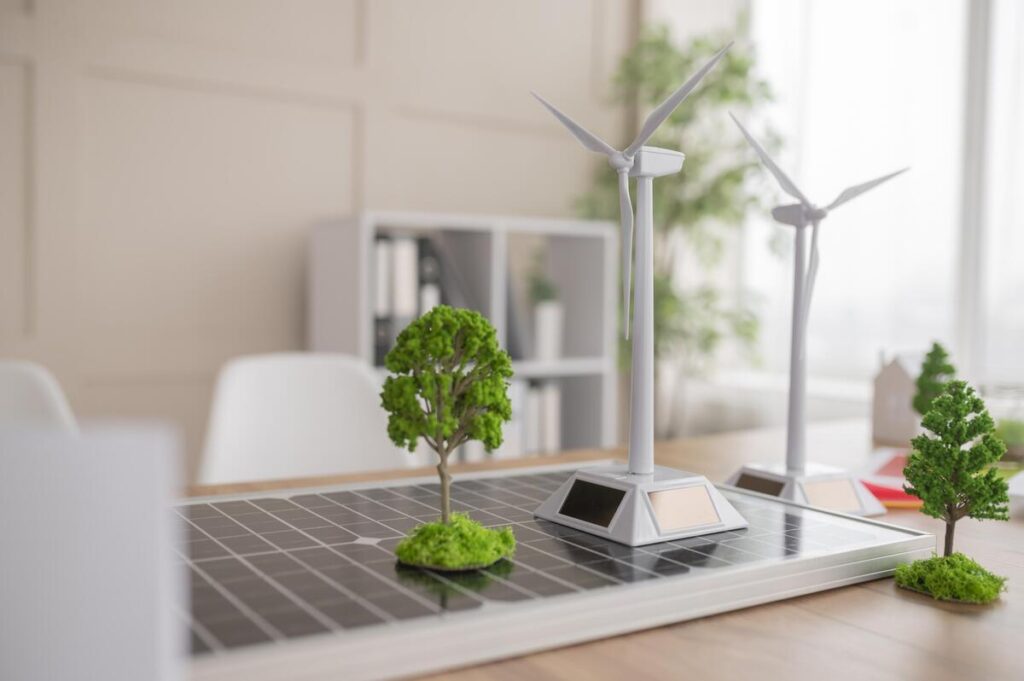Exclusive Neuroject Article: The need for sustainable and efficient energy consumption within our built environment has never been more urgent in a time of rising worries over climate change and resource depletion. Buildings serve as the focus point for resolving these issues since they account for a sizable portion of world energy consumption and greenhouse gas emissions. Buildings must optimize their energy use if they are to minimize their negative environmental effects and maintain their financial viability.
This article takes the reader on a thoughtful tour of the world of energy-efficient buildings, covering everything from the fundamental elements and technologies to the regulatory environments and actual case studies. It is crucial to remember that even while building energy optimization has many advantages, its effective application necessitates careful consideration and strategic planning.
Table of Contents
Introduction
Energy optimization in buildings has emerged as a crucial cornerstone of sustainable development and ethical resource management at a time when environmental awareness is on the rise. The demand for energy in our built environment is increasing as urbanization quickens and the world’s population keeps growing. The quest for building energy optimization has elevated in prominence in response to this urgent problem.
Building energy optimization is a complex activity that encompasses a wide range of techniques, tools, and methods for lowering energy use, increasing effectiveness, and reducing environmental impact in the built environment. It is a proactive reaction to the interconnected problems of climate change, resource scarcity, and rising energy prices. As we look to the future, we will pick out new breakthroughs and trends that have the potential to transform the field of energy optimization and move our structures closer to higher sustainability, resilience, and efficiency.
Suggested article for reading: Sustainable Architecture Projects | Sustainable Buildings

Understanding Building Energy Optimization
A key tactic in the goal of sustainable and energy-efficient urban landscapes is building energy optimization. It is fundamentally about taking a methodical approach to reducing energy use while increasing efficiency and comfort in buildings. This strategy includes a variety of methods and tools that work in harmony to minimize energy waste, improve operational effectiveness, and lessen environmental impact.
The strategic management of energy fluxes inside a structure is a vital component of optimizing building energy use. This includes the real-time monitoring, control, and adjustment of energy use through the integration of cutting-edge building management systems, intelligent sensors, and data analytics. Moreover, decreasing heat transmission and maintaining internal comfort levels while lowering the need for excessive heating or cooling are both made possible by optimizing the building envelope, which includes insulation, windows, and roofing.
The effective use of appliances and lighting is closely related to building energy optimization. Utilizing smart controls and switching to energy-efficient lighting technology like LEDs can significantly reduce the amount of electricity used. Reduced energy needs and operating expenses are another benefit of using energy-efficient appliances and machinery, such as HVAC systems with variable speed drives.
It is essential to take into account the relationships between these elements in order to fully grasp the complex web of factors involved in building energy optimization. This all-encompassing viewpoint makes it easier to spot trade-offs and synergies that could result in more efficient energy-saving tactics. Additionally, a good optimization approach calls for ongoing monitoring, performance evaluation, and periodic modifications to accommodate shifting occupancy patterns, climatic changes, and technological improvements.
In order to fully comprehend building energy optimization, one must be aware of the complex interactions between the systems, technologies, and behaviors that affect how much energy is used in buildings. It adopts a proactive, multidisciplinary strategy that advances the general quality of indoor settings, lowers energy consumption, and promotes global sustainability goals.
Suggested article for reading: Building Technology | Construction Monitoring
Key Components of Building Energy Optimization
Optimizing building energy usage is a multifaceted endeavor that entails the integration of various strategies and technologies to enhance energy efficiency and diminish environmental repercussions. Several critical components assume pivotal roles in accomplishing these goals.
- Energy-Efficient Lighting and Appliances: Illumination and appliances constitute a substantial segment of a building’s energy consumption. Energy-efficient lighting solutions, such as LED lighting and intelligent lighting controls, have the potential to substantially diminish electricity consumption without compromising the quality of illumination. Furthermore, the utilization of appliances and equipment bearing the Energy Star rating can additionally contribute to decreased energy usage and reduced operational expenses.
- HVAC Systems Optimization: Heating, ventilation, and air conditioning (HVAC) systems are substantial consumers of energy. The implementation of optimization strategies for HVAC, such as variable speed drives, smart thermostats, and controls organized by zones, can result in precise temperature control, reduced energy wastage, and heightened occupant comfort.
- Building Envelope Improvements: The building envelope, encompassing walls, roofs, windows, and insulation, plays a pivotal role in preserving indoor thermal comfort and averting energy loss. The incorporation of appropriate insulation, high-performance windows, and weatherproof sealing can minimize heat transfer, diminishing the necessity for excessive heating or cooling.
- Renewable Energy Integration: The integration of renewable energy sources like solar panels and wind turbines can offset a building’s energy consumption derived from conventional sources. On-site energy generation contributes to energy independence and has the potential to lead to net-zero energy structures, where the energy produced equals or surpasses the energy consumed.
- Utilization of Energy Management Systems (EMS): Energy management systems harness advanced sensors, data analytics, and automation to oversee and regulate energy utilization across diverse building systems. EMS allows for real-time optimization, enabling facility managers to promptly identify inefficiencies and make necessary adjustments.
- Building Automation and Controls: Building automation systems facilitate centralized control of various building systems, encompassing lighting, HVAC, and security. The integration of these systems via automation and controls optimizes energy consumption by coordinating operations based on occupancy patterns and external conditions.
- Engagement of Occupants: Educating and involving building occupants in energy-conservation practices can result in noteworthy energy savings. Simple actions such as switching off lights when not in use and employing energy-efficient appliances can cumulatively make a substantial impact.
- Maintenance and Performance Monitoring: Consistent maintenance of building systems guarantees optimal functionality. The implementation of a proactive maintenance approach and the conduction of performance monitoring aid in the identification and timely rectification of inefficiencies.
Suggested article for reading: Construction HVAC

Tools and Technologies for Building Energy Optimization
In the pursuit of energy optimization, a wide range of tools and technologies have emerged to facilitate the effective management of energy resources within structures. These innovative solutions grant property proprietors and facility overseers the ability to observe, govern, and enhance energy utilization. Below, we explore some of the essential tools and technologies pivotal in this undertaking.
-
- Building Management Systems (BMS): Building Management Systems, also recognized as Building Automation Systems (BAS), function as the central hub for enhancing energy efficiency in contemporary buildings. BMS integrates various subsystems like HVAC, lighting, security, and access control into a unified platform. Through real-time monitoring and control, BMS enables the precise adjustment of building systems to optimize energy efficiency and ensure occupant comfort.
- Energy Management Software: Energy management software complements BMS by offering comprehensive data analysis and reporting capabilities. These platforms amass data from sensors and meters, empowering facility managers to trace energy consumption patterns, identify inefficiencies, and implement data-driven optimization approaches.
- Smart Meters and Sensors: Smart meters and sensors play a crucial role in quantifying and overseeing energy consumption. Advanced meters supply real-time data regarding electricity, gas, and water usage, enabling accurate billing and aiding building operators in pinpointing areas for enhancement. Sensors, encompassing occupancy and environmental sensors, facilitate responsive and automated management of lighting and HVAC systems, predicated on occupancy and environmental circumstances.
- Internet of Things (IoT) Devices: IoT devices have revolutionized the process of optimizing buildings for energy efficiency. These devices, furnished with sensors and connectivity, enable remote surveillance and control of diverse systems. For example, intelligent thermostats adapt HVAC settings in response to occupancy and weather conditions, curbing unnecessary energy outlay.
- Demand Response Systems: Demand response systems permit buildings to participate in demand-side management initiatives. These systems can automatically curtail energy consumption during peak demand intervals, assisting in grid stability and earning incentives for building proprietors.
- Predictive Analytics and Artificial Intelligence (AI): Predictive analytics and AI-driven algorithms are increasingly harnessed for projecting energy demand and streamlining building operations. These technologies can forecast the need for equipment maintenance, optimize energy-intensive processes, and adapt to shifting occupancy patterns to diminish energy wastage.
- Energy Storage Solutions: Energy storage technologies, including batteries and thermal storage systems, accumulate surplus energy during low-demand periods and release it during high-demand periods. This reduces dependence on the grid during peak hours and can lead to cost savings.
- Remote Monitoring and Control Apps: Mobile applications and cloud-based platforms empower building managers to remotely supervise and regulate energy systems. This capability proves particularly beneficial for expansive or multi-site facilities, offering real-time insights and control, irrespective of location.
- Energy-Efficient Appliances and Equipment: Energy-efficient appliances and equipment, including products with the Energy Star rating, contribute to energy optimization by lowering the energy burden within buildings.
Suggested article for reading: Smart Sensor in Construction | IoT in Construction
Energy Efficiency Regulations and Standards
Energy efficiency regulations and standards serve as pivotal tools in advancing the responsible utilization of energy resources and curtailing the environmental consequences associated with energy usage. These stipulations establish precise requisites, benchmarks, and directives that oversee the energy efficiency of structures, appliances, and industrial operations. Here, we delve into the significance and repercussions of these energy efficiency regulations and standards.
Significance of Energy Efficiency Regulations and Standards
- Diminishing Energy Expenditure: These regulations and standards necessitate the adoption of energy-efficient methodologies and technologies, culminating in a reduction in energy consumption. This not only aids in the reduction of greenhouse gas emissions but also contributes to the fight against climate change while diminishing the reliance on fossil fuels.
- Trimming Utility Expenses: Energy-efficient products and architectural designs generally yield decreased utility bills for end-users. This can ease financial burdens for both households and enterprises.
- Augmenting Energy Security: Through the curbing of energy demand, these regulations and standards bolster energy security by diminishing the dependence on imported energy resources and the instability associated with energy markets.
- Fostering Economic Advancement: Energy efficiency measures can stimulate economic progress by generating employment opportunities in industries linked to energy-efficient technologies and construction.
Impact of Energy Efficiency Regulations and Standards
- Building Codes and Standards: Building energy codes delineate the minimum energy efficiency prerequisites for fresh constructions and renovations. These codes address elements like insulation, HVAC systems, lighting, and windows, ensuring that new edifices are devised with energy efficiency in mind. For instance, in the United States, the International Energy Conservation Code (IECC) establishes energy efficiency benchmarks for residential and commercial structures.
- Appliance and Equipment Standards: Governments stipulate efficiency standards for appliances and equipment such as refrigerators, air conditioners, and light bulbs. These standards necessitate that manufacturers fabricate products adhering to particular energy efficiency criteria. For example, the ENERGY STAR program in the United States certifies and labels energy-efficient appliances. It reduces energy usage in favor of building energy optimization.
- Industrial and Commercial Standards: Various industries are beholden to energy performance standards mandating efficiency enhancements. These standards often concentrate on energy-intensive procedures, such as motors and pumps employed in manufacturing.
- Vehicle Efficiency Standards: Governments institute fuel efficiency standards for vehicles with the objective of lessening fuel consumption and emissions. For instance, Corporate Average Fuel Economy (CAFE) standards in the United States govern vehicle fuel efficiency.
- Voluntary Certification Programs: In conjunction with obligatory regulations, voluntary certification initiatives, such as LEED (Leadership in Energy and Environmental Design) for buildings, promote energy efficiency and sustainability. It reduces energy usage in favor of building energy optimization.
Through these measures, energy efficiency regulations and standards champion conscientious energy utilization, diminish environmental repercussions, and bolster economic development by promoting the integration of energy-efficient methodologies and technologies.

Benefits of Building Energy Optimization
Building energy optimization presents an array of benefits that encompass economic, environmental, and societal advantages. In this discussion, we explore the significant merits associated with enhancing energy efficiency within structures.
1. Financial Savings: Energy optimization immediately translates into reduced costs. Employing energy-efficient technologies and methods allows building proprietors to markedly lower energy expenditures, directly impacting operational costs and bolstering long-term financial viability.
2. Environmental Influence: Building energy optimization plays a crucial role in mitigating the ecological consequences of energy consumption. Diminished energy usage results in fewer emissions of greenhouse gases and a decreased carbon footprint. This becomes pivotal in the fight against climate change and in safeguarding the environment.
3. Enhanced Comfort: Optimization strategies, including efficient HVAC systems and well-insulated building envelopes, contribute to elevated indoor comfort for occupants. The maintenance of stable temperatures and air quality enhances the overall quality of life and productivity within structures.
4. Increased Property Value: Energy-efficient buildings often command higher property values. Achieving sustainable and green certifications, such as LEED or Energy Star ratings, renders a property more appealing to potential buyers and tenants, consequently augmenting property appreciation.
5. Adherence to Regulations: Abiding by energy efficiency regulations and standards offers more than just a benefit; it is often a legal necessity. Compliance with these directives ensures that buildings meet minimum energy performance criteria, thus averting potential fines and legal complications.
6. Strengthened Energy Security: Curbing energy consumption bolsters energy security by reducing a building’s susceptibility to energy supply disruptions. A lower energy demand contributes to overall energy resilience.
7. Job Generation: The realm of building energy optimization fosters the creation of employment opportunities. This encompasses roles related to manufacturing energy-efficient technologies, their installation, maintenance, and energy auditing. Such job prospects invigorate local economies.
8. Alleviated Grid Pressure: Energy-efficient buildings exert diminished pressure on the electrical grid during peak demand periods. This can lead to enhanced grid stability and potentially diminish the necessity for costly grid upgrades.
9. Alignment with Sustainability Objectives: Many entities, including organizations and governments, have committed to sustainability objectives and targets for reducing emissions. Building energy optimization harmonizes with these objectives and aids these entities in fulfilling their sustainability pledges.
10. Commitment to Social Responsibility: Building energy optimization signifies a dedication to social responsibility. It diminishes the environmental imprint of buildings, thereby contributing to the creation of healthier communities and improved quality of life for all.
In essence, the advantages of building energy optimization span a diverse spectrum, covering economic savings, ecological stewardship, and an elevated quality of life for building occupants. These advantages emphasize the significance of prioritizing energy efficiency in the design, construction, and management of structures.
Challenges and Barriers
Although building energy optimization presents numerous advantages, it is not exempt from challenges and impediments. Overcoming these hindrances is vital to fully harnessing the potential of energy-efficient methodologies. In this discussion, we explore some of the prevalent challenges and obstacles linked to building energy optimization.
- Initial Expenditure: One of the principal hindrances to building energy optimization is the perceived high upfront expenses. The implementation of energy-efficient technologies and the retrofitting of existing systems often demand substantial investments. Although these expenses are frequently offset by long-term savings, the initial financial commitment can deter some building owners from embarking on building energy optimization initiatives.
- Lack of Awareness: Many individuals, including building proprietors, developers, and occupants, may lack awareness regarding the advantages of building energy optimization. Without a comprehension of the potential long-term cost reductions and environmental benefits, there may be a reluctance to embrace energy-efficient practices.
- Split Incentives: In situations where building owners and occupants are separate entities, the challenge of split incentives arises. Building owners may be hesitant to invest in building energy optimization measures when occupants are the ones who directly benefit from reduced utility bills. Aligning the interests of both parties is crucial to surmounting this obstacle.
- Technological Complexity: The rapid evolution of energy-efficient technologies can be overwhelming. The intricacy of selecting and implementing appropriate technologies can dissuade building owners and managers from pursuing optimization.
- Lack of Expertise: Many building owners and managers lack the requisite expertise to identify building energy optimization opportunities, evaluate technologies, and oversee implementation proficiently.
- Regulatory and Policy Uncertainty: Unclear or changing regulations and policies can create uncertainty for building owners, making it challenging to confidently invest in energy optimization measures.
- Retrofitting Challenges: Retrofitting older buildings with energy-efficient systems can be problematic due to structural limitations and the need for seamless integration with existing infrastructure.
- Resistance to Behavioral Changes: Resistance to adopting behavioral changes among occupants can undermine the effectiveness of building energy optimization endeavors. Encouraging occupants to adopt energy-efficient practices, such as turning off lights and using appliances responsibly, is imperative.
- Cultural and Organizational Resistance: Organizations with established practices and cultures may resist change, impeding the adoption of energy-efficient technologies and practices.
- Lack of Financing Mechanisms: The limited availability of financing mechanisms tailored to building energy optimization can impede implementation, particularly for smaller building owners.
In conclusion, addressing these challenges and barriers involves raising awareness, providing technical support, offering incentives, and establishing policies that facilitate building energy optimization. Overcoming these impediments is essential to achieving sustainable and efficient building operations.

Future Trends and Innovations
The realm of building energy optimization is in a perpetual state of evolution, driven by progressions in technology, shifts in environmental priorities, and the relentless pursuit of heightened energy efficiency. In this context, we examine forthcoming trends and innovations that are molding the domain of building energy optimization.
- Smart Structures: The amalgamation of Internet of Things (IoT) devices and sensors is rendering buildings more intelligent. These smart edifices have the capability to continually monitor and adapt energy consumption in real-time, contingent on factors like occupancy and weather conditions. This technological advancement facilitates more precise energy optimization and augments the comfort of occupants.
- Artificial Intelligence (AI) and Machine Learning: AI and machine learning algorithms are progressing in sophistication when it comes to forecasting and optimizing energy usage. These technologies possess the capacity to scrutinize extensive datasets, discern patterns, and effect real-time adjustments to building systems, thereby further elevating building energy optimization.
- Energy Storage Solutions: The advancement of cutting-edge energy storage systems, encompassing high-capacity batteries and thermal storage, empowers buildings to amass surplus energy for utilization during peak demand periods. Energy storage diminishes reliance on the grid and enhances energy resilience.
- Electrification: A mounting inclination is the electrification of building systems, encompassing heating, cooling, and transportation. As renewable energy sources proliferate, electrification curtails dependency on fossil fuels, consequently contributing to diminished carbon emissions.
- Net-Zero and Positive Energy Structures: The notion of net-zero energy buildings, wherein energy generation equals or surpasses consumption, is gaining traction. Some buildings are even conceived as positive energy edifices, generating surplus energy that can be channeled back into the grid.
- Energy Performance Contracts (EPCs): EPCs, which involve outsourcing building energy optimization to specialized entities, are gaining currency. These contracts vouch for energy savings and shift the onus of implementation to third-party experts.
- Building-Grid Integration: There is an escalating trend of integrating buildings into the broader energy grid. This integration facilitates demand response initiatives, wherein buildings can modulate their energy usage in response to grid conditions, thereby aiding in grid stabilization.
- Sustainable Materials and Design: Innovations in sustainable building materials and design are curtailing the energy requirements for construction and operation. Features like passive solar design, green roofs, and advanced insulation materials are contributing to energy-efficient buildings.
- Decentralized Energy Systems: The adoption of decentralized energy systems, incorporating microgrids and on-site renewable energy generation, is diminishing reliance on centralized power plants, thereby enhancing energy self-sufficiency for buildings.
- Circular Economy: The notion of a circular economy, where building components and materials are refurbished or recycled rather than discarded, is gaining traction. This approach curtails waste and diminishes the environmental footprint of construction and renovation.
In summary, these forthcoming trends and innovations epitomize a shift toward more sustainable and efficient building practices. As environmental concerns intensify and technology continues to advance, building energy optimization will play a pivotal role in reducing energy consumption and carbon emissions while enhancing the overall quality of buildings and urban environments.
Suggested article for reading: AI in Construction | Machine Learning in Construction
Tips for Implementing Building Energy Optimization
Efficiently executing building energy optimization is a multifaceted undertaking demanding meticulous planning, effective strategies, and unwavering dedication. Here are some fundamental pointers to navigate the prosperous implementation of energy optimization measures in buildings:
- Conduct an Energy Assessment: Initiate the process by conducting a thorough energy assessment to evaluate the present energy performance of the structure. Identify areas characterized by energy wastage, inefficiencies, and prospects for enhancement. This assessment forms the cornerstone for formulating an efficacious building energy optimization strategy.
- Establish Clear Goals: Define unambiguous and quantifiable objectives for energy optimization. Determine your aims, whether they involve diminishing building energy optimization, securing particular energy efficiency accreditations like LEED or Energy Star, or enhancing occupant comfort.
- Prioritize Energy-Efficient Measures: Grounded in the results of the energy evaluation, prioritize energy-efficient measures that present the greatest potential for savings and enhancements. Initiate action on readily achievable measures to garner swift victories and cultivate momentum.
- Invest in Energy-Savvy Technologies: Delve into and invest in energy-efficient technologies and systems, encompassing LED lighting, high-efficiency HVAC systems, advanced insulation, and intelligent controls. Frequently, these technologies deliver substantial, long-term savings.
- Optimize HVAC Systems: Heating, ventilation, and air conditioning (HVAC) systems represent substantial energy consumers. Deploy approaches such as zoning, programmable thermostats, and routine maintenance to optimize HVAC efficiency and curtail energy utilization.
- Engage Building Occupants: Instruct and involve building occupants in energy-conservation practices. Motivate them to switch off lights, disconnect devices, and utilize building energy optimization appliances. Occupant consciousness and cooperation are pivotal for enduring energy savings.
- Routine Maintenance: Enforce a proactive maintenance timetable for building systems. Diligently maintained equipment functions more efficiently and enjoys a lengthier lifespan, mitigating the necessity for expensive replacements.
- Monitor and Compare Energy Consumption: Put in place energy monitoring systems to oversee real-time energy use. Measure your building’s performance against industry benchmarks to perpetually recognize areas ripe for enhancement.
- Contemplate Renewable Energy: Investigate the incorporation of renewable energy sources like solar panels or wind turbines to offset energy consumption sourced from conventional means. Renewable energy aids in fulfilling sustainability objectives and reducing long-term energy expenses.
- Engage Experts: Seek out the counsel of energy consultants or specialized firms equipped with expertise in building energy optimization. They can provide valuable insights, perform thorough energy evaluations, and proffer customized solutions.
- Financial Strategy: Develop a transparent financial strategy for energy optimization undertakings. Compute the return on investment (ROI) for each measure and secure the requisite funding or financial arrangements.
- Periodic Evaluation and Adaptation: Building energy optimization is an ongoing process. Regularly review your energy performance, assess the effectiveness of implemented measures, and be prepared to adapt strategies as necessitated by evolving objectives.
- Stay Well-Informed: Keep abreast of the latest developments in energy-efficient technologies, building codes, and regulations. Staying well-informed ensures your building remains at the forefront of energy optimization practices.
- Celebrate Milestones: Acknowledge and celebrate milestones attained in energy optimization with building occupants and stakeholders. Positive feedback and recognition can invigorate the persistence of energy-efficient behaviors.
Implementing building energy optimization necessitates dedication and perseverance, but the long-term rewards, encompassing financial savings, diminished environmental impact, and enhanced building performance, validate its merit.

Conclusion
In our constant search for sustainable and effective structures, building energy optimization stands as a crucial and dynamic topic. Implementing energy-saving methods becomes more than simply an option as we negotiate the always-changing terrain of energy difficulties; it becomes a requirement.
These procedures enable us to redefine the way we approach building design and operation, from conducting complete energy audits to investing in cutting-edge technologies. In addition to lowering operational expenses, they also lessen their negative effects on the environment and improve the health of building inhabitants.
Although there are still difficulties and constraints, such as start-up fees and regulatory complications, the potential rewards significantly surpass these difficulties. Future developments in this area are highly anticipated thanks to trends and technologies like smart buildings, AI-driven building energy optimization, and the incorporation of renewable energy sources.
Building energy optimization involves more than simply technical fixes; it’s a group effort that calls for cooperation, ingenuity, and a dedication to sustainability. We can design structures that are not only energy-efficient but also cozy, durable, and earth-friendly by following these suggestions and remaining informed. By doing this, we set out on a path to a future for our built environment that is more sustainable and energy-conscious.
Resources:
Navigant Research | U.S. Department of Energy | International Energy Agency | U.S. Environmental Protection Agency | EIA | Building Technologies Office | NREL | Energy Management Association | FEMP | ENERGY STAR | International Renewable Energy Agency | U.S. National Highway Traffic Safety Administration
Journal Articles:
- Garg, V., & Garg, A. (2019). Energy Efficiency and Management in Industries. CRC Press.
For all the pictures: Freepik



